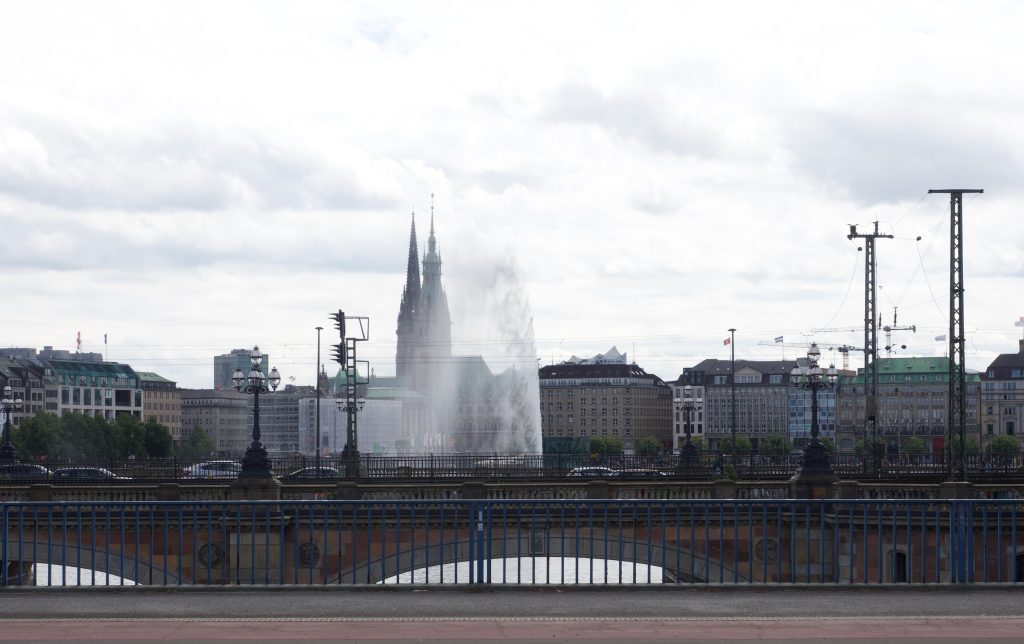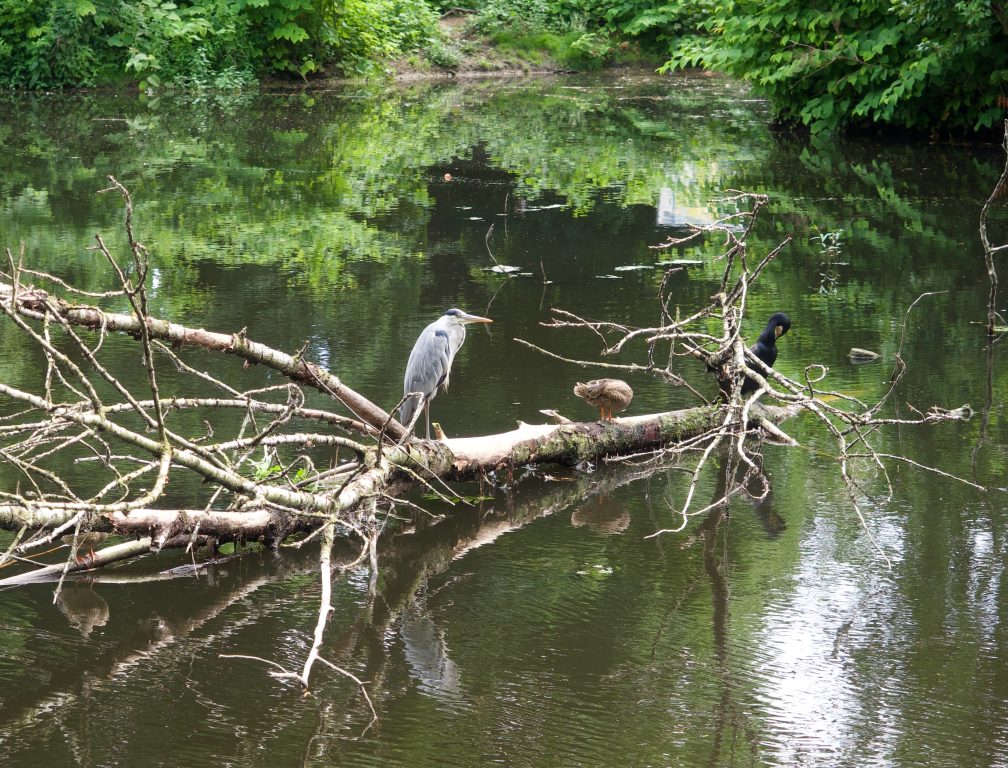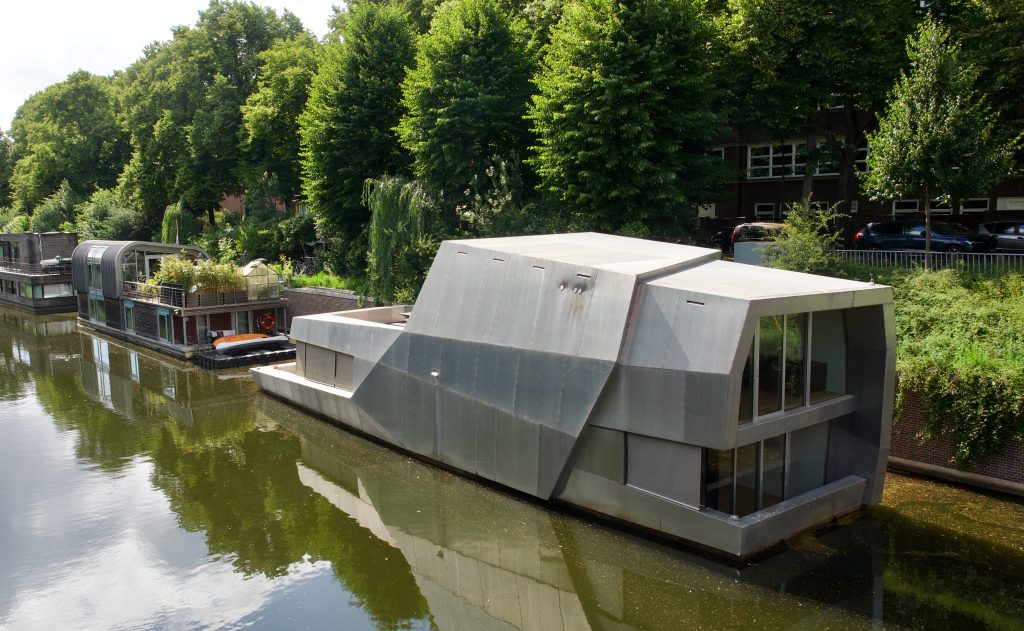Today was a pretty laid-back day. I ran after 7 am and actually got to watch a whole bunch of kids heading to school with their parents and was passed by many people on bicycles headed to work. It’s lovely to be part of a society where so many more people get places on foot, by bike (with and without e-assist), and yes, even on scooters (not my favorite, but better than cars!). And even when the distances are too far for that, there are so many public transportation options, and thus so many more people who do not use their cars on a daily basis, or even go without.
Then we had breakfast and sat in front of our computers for the rest of the morning, because I had some work to catch up on. Andrea and Peter went grocery shopping and did all the cooking for a lovely pasta lunch (ravioli arabbiata and some incredible sweet woodruff / Waldmeister ice cream for dessert). Around 2 pm, Andrea, Mark and I took off together, but all for different purposes: Andrea went a little ways with us on her way to a physical therapist to make appointments for when her cast comes off; Mark accompanied me to a cafe near campus, where I was going to meet my former mentor at Hamburg University, and then went on to walk all the way home along again (2 hours, 6 miles).



Meanwhile, I had coffee with Peter Hühn (we try for this every year), who was the English professor (now an emeritus) who was my main advisor, reader of my Masters thesis, and a huge influence on me. He still gives lecture series for senior citizens every semester, and is a passionate hiker. So we talked about academics, politics, research interests, and good hiking routes. It was a good time and two hours flew by!
Then I joined the others at home and we had salad and bread for dinner. I packed our suitcases (yet again) since we are leaving for Berlin tomorrow. It was a busy day–just not a lot of photos!